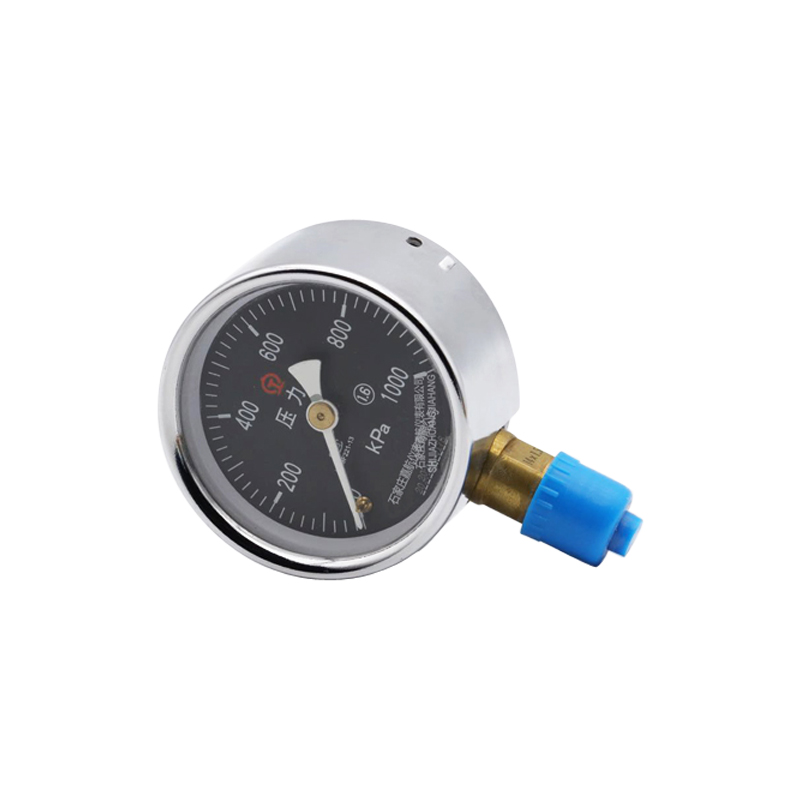
Dec . 06, 2024 00:34 Back to list
pengertian diaphragm pressure gauge
Understanding Diaphragm Pressure Gauges
Diaphragm pressure gauges are essential instruments used in various industries to measure and monitor the pressure of gases and liquids. Their accuracy, durability, and versatility make them a preferred choice for many applications, including in chemical processing, oil and gas, food and beverage, and HVAC systems. In this article, we will explore the working principle, design features, applications, and advantages of diaphragm pressure gauges.
Working Principle
The diaphragm pressure gauge operates based on the deflection of a flexible diaphragm when subjected to pressure. The diaphragm is typically made of materials such as stainless steel, which offers high resistance to corrosion and damage. When the pressure from the fluid or gas acts on one side of the diaphragm, it begins to deform, causing a movement that is transmitted through a mechanical linkage to a pointer on a dial or an electronic sensor.
The amount of deflection is proportional to the pressure being measured. This deflection is then translated into a pressure reading. The gauges can measure both absolute pressure (in relation to a vacuum) and gauge pressure (in relation to atmospheric pressure), making them versatile instruments for different needs.
Design Features
Diaphragm pressure gauges have distinct design features that enhance their functionality. One of the key characteristics is the separation of the measuring component from the medium being measured. This is often achieved through a filling liquid in the gauge that transmits pressure to the diaphragm while protecting it from corrosive or viscous materials. The filling liquid also dampens pressure fluctuations, leading to more stable readings.
Another important design aspect is the range of materials used for the diaphragm itself. Depending on the application, diaphragms can be made from various metals and elastomers to withstand different pressures and temperatures. Additionally, many diaphragm gauges are designed to be weatherproof and shock-resistant, making them suitable for outdoor and heavy-duty industrial environments.
pengertian diaphragm pressure gauge

Applications
Diaphragm pressure gauges are widely used in numerous applications. In chemical processing industries, they monitor the pressure of corrosive gases and liquids, ensuring safe and efficient operations. In oil and gas, these gauges help manage pressure in pipelines and vessels, thus preventing leaks and potential explosions.
In the food and beverage industry, diaphragm pressure gauges are used to monitor production processes, such as fermentation and pasteurization, where maintaining the correct pressure is crucial for quality control. In HVAC systems, they measure air pressure in ducts, ensuring proper ventilation and energy efficiency.
Advantages
The advantages of diaphragm pressure gauges are numerous. Their ability to measure pressure in both high and low ranges, alongside their robustness and reliability, makes them suitable for use in even the harshest conditions. Moreover, their mechanical design ensures that they require minimal maintenance, providing long-term service without recurrent costs.
Accuracy is another significant benefit. Diaphragm gauges can provide precise measurements, which are vital for maintaining operational efficiency and safety in industrial processes. They are also relatively easy to install and operate, making them user-friendly tools for technicians and engineers.
Conclusion
In summary, diaphragm pressure gauges are indispensable instruments in various industrial applications. Their working principle, which leverages the deflection of a diaphragm, along with their robust design and versatility, make them ideal for accurate pressure measurement in challenging environments. As industries continue to evolve, the demand for reliable and efficient pressure measurement tools will persist, solidifying the role of diaphragm pressure gauges in modern operations. Understanding their functionality and applications will lead to better maintenance practices and enhanced operational efficiency in the industries that rely on them.
-
High-Accuracy Differential Pressure Gauge Diaphragms OEM Factories & Services
NewsMay.24,2025
-
Water Fire Extinguisher Pressure Gauge Durable Supplier Solutions
NewsMay.24,2025
-
Handheld Digital Differential Pressure Gauge Portable, High-Accuracy & Real-Time Data
NewsMay.24,2025
-
Digital Pressure Gauge RS Components for Semiconductor & Chip Industries
NewsMay.23,2025
-
Industrial Differential Pressure Gauges Global Supplier & Pricelist
NewsMay.23,2025
-
Bourdon-Type Differential Pressure Gauges High Accuracy & Affordable Pricing
NewsMay.22,2025
